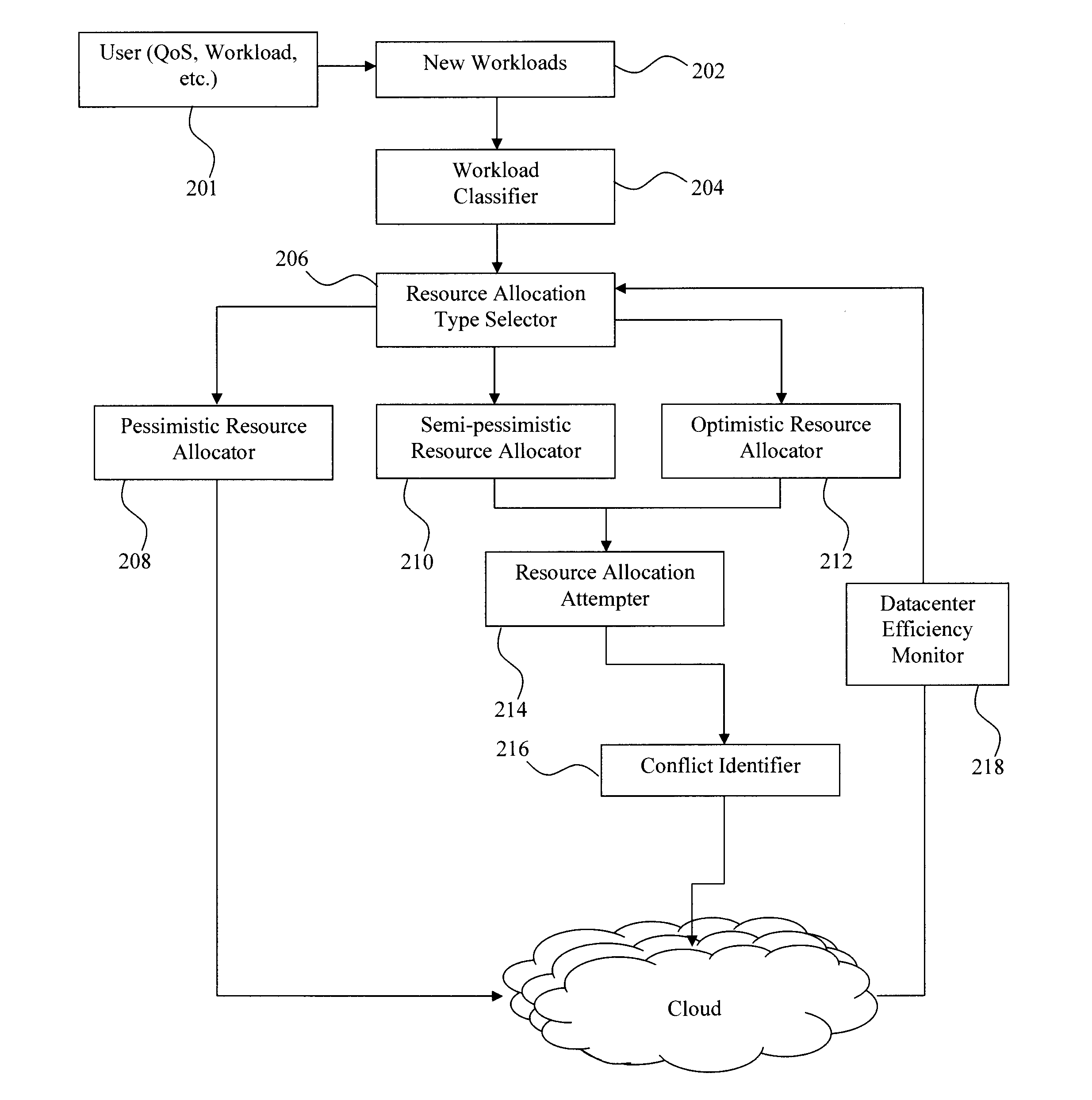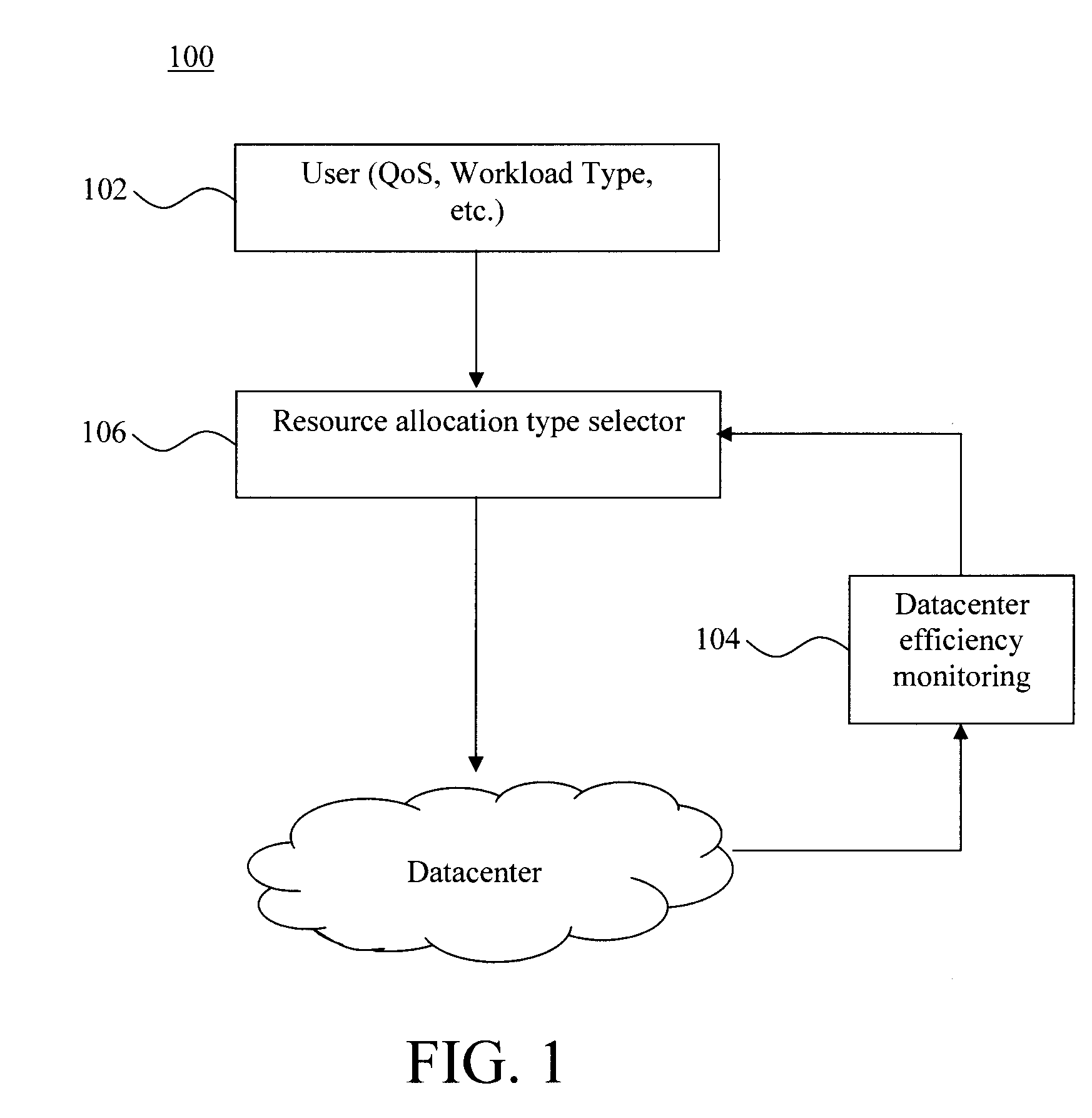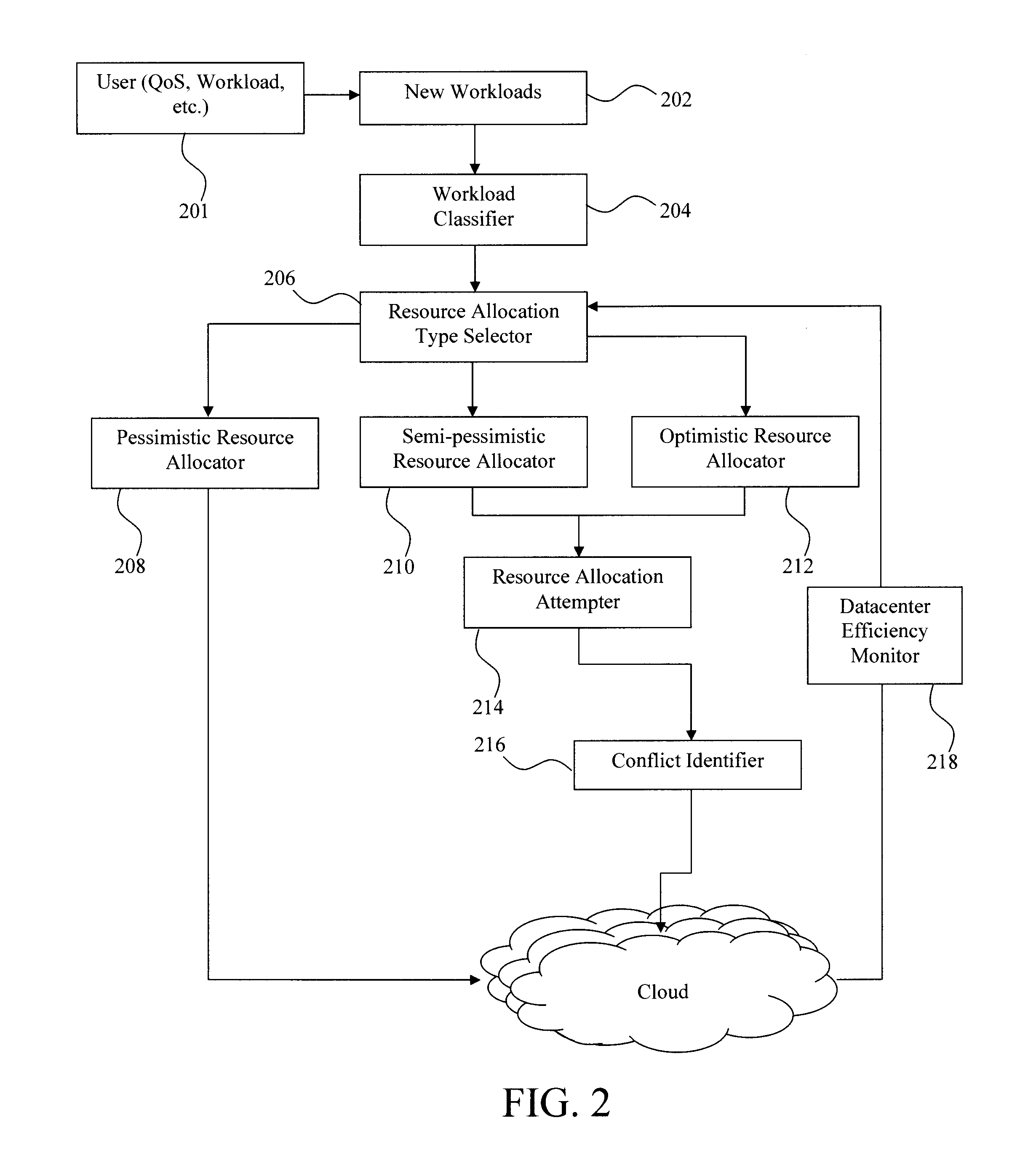Selecting Resource Allocation Policies and Resolving Resource Conflicts
a resource allocation and resource conflict technology, applied in the field of cloud computing infrastructures, can solve the problems of difficult diversification, difficult and still a challenge to fit heterogeneous workloads in the same cluster
- Summary
- Abstract
- Description
- Claims
- Application Information
AI Technical Summary
Benefits of technology
Problems solved by technology
Method used
Image
Examples
example
[0051]A user may specify a QoS to have less than 10% conflicts, and have a storage intense workload with a lot of transactions. The datacenter can be in a state where there are 3 parallel schedulers in a shared state with A=B, hence we have A_i=B_i where i=1, 2, 3. Say for example that the datacenter has 40% idle machines (vms) when the new request comes.
[0052]F(0.1, Storage, High Transactions, 0.4, (A_i=B_i, n=3))=Desired objective value
[0053]User objective=1−conflicts=1−0.1=0.9
[0054]Datacenter objective=none
[0055]Desired objective=0.9, hence
[0056]F(0.1, Storage, High Transactions, 0.4, (A_i=B_i, n=?))=0.9
[0057]When one solves F for (A_i=B_i, n=?)) and find the A_i, B_i and n values.
[0058]Thus, according to the present techniques, one can readily determine the A_i, B_i, and n values—and define optimistic, pessimistic and semi-pessimistic with the subsets of A, B and n.
Rule based model: this is a simpler model where rules are defined on the user QoS, workload types, and datacenter s...
PUM
 Login to View More
Login to View More Abstract
Description
Claims
Application Information
 Login to View More
Login to View More - R&D
- Intellectual Property
- Life Sciences
- Materials
- Tech Scout
- Unparalleled Data Quality
- Higher Quality Content
- 60% Fewer Hallucinations
Browse by: Latest US Patents, China's latest patents, Technical Efficacy Thesaurus, Application Domain, Technology Topic, Popular Technical Reports.
© 2025 PatSnap. All rights reserved.Legal|Privacy policy|Modern Slavery Act Transparency Statement|Sitemap|About US| Contact US: help@patsnap.com



